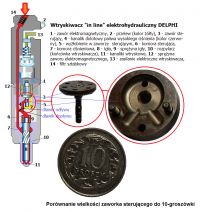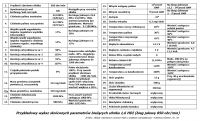mirek2610 wrote: If there was something wrong with the injections, then while driving the car would behave strangely (power loss, smoke from the exhaust or other symptoms)?
Because muj nissan if it fires, then on the road behaves without complaint.
My "tadpole" behaved without complaint on the road. And yet three had to be mentioned
control valves except one in injection and wash all in the washer.
The capriciousness of the valves should be explained in such a way that they are very delicate, fragile construction (picture below - comparison to 10 pennies). As a result, they are most exposed among other moving parts to mechanical damage such as pitting, scratches, cracks, etc. As a result, they lose their tightness after some time.
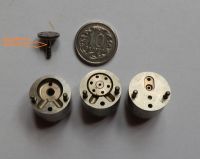
This applies especially to DELPHI electro-hydraulic injectors, which have different modes of operation
control valves than BOSCH, SIEMENS or CONTINENTAL. Namely, these tiny valves have special grooves in the neck (orange arrow on the photo above), which are a key element in
control fuel injection. Through these gouges, the fuel is directed either to the atomizer, needle and injection channels, or to the overflow.
It is understandable, therefore, that this notch (channel) must be absolutely tight, otherwise the fuel instead of being sprayed and injected, escapes to the overflow into the tank through a leaky (here corroded by corrosion, cracked, scratched) valve.
Hence, sometimes strange symptoms, when the engine suddenly does not want to start after warming up, while in the cold it started flawlessly. Or it suddenly goes out while driving for no reason.
All because the valve is not tight (and this changes under the influence of temperature - here: thermal expansion of metals) and some of the fuel does not go to the injector tips, but escapes to the overflow. The injector is simply not injected enough and the engine goes out a few seconds after ignition, it does not want to ignite, although it is warm, etc.
Photos below show various damages of valves and other elements of injectors that occurred during their operation - I remind you - in very difficult conditions. injectors
Common Rail because they are subjected to extreme loads, i.e. billions of times of fuel pressure impact from
200 down
2000 bar (
twenty down
200 MPa ) and more over many years of work. The fit accuracy of moving parts is on the order of microns. As a result, the smallest impurities get between themmay cause their complete destruction or various types of ailments, shown in the pictures below.
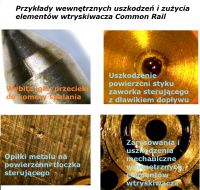
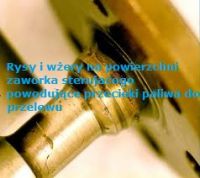
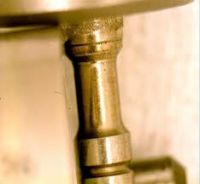
I'm not saying that the reason for your troubles are just the injectors. But it is worth in the first step - I emphasize with emphasis -
ruled out them guilty or innocent fault.
So it's not about disassembling and replacing them immediately, but checking that they work well.
You should also check in
what conditions work. For if they are treated
metal shavings through
high pressure pump (pwc), sowing with metal chips due to too "dry" fuel - no whip - injectors must fall.
The problem of "dry" fuel is very widely discussed in the forum. I advise you to be interested at the occasion of the checks, whether you have no metal filings circulating around the entire fuel circuit from the tank to the injectors.
If during the inspection of the fuel filter you see metal particles at its bottom as in the photo below, then - as the saying goes - "save yourself who can!". It means that you are refueling "dry" fuel (sulfur-free) and hence the problems in question.
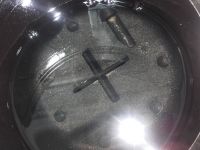
Kisses KotBury



